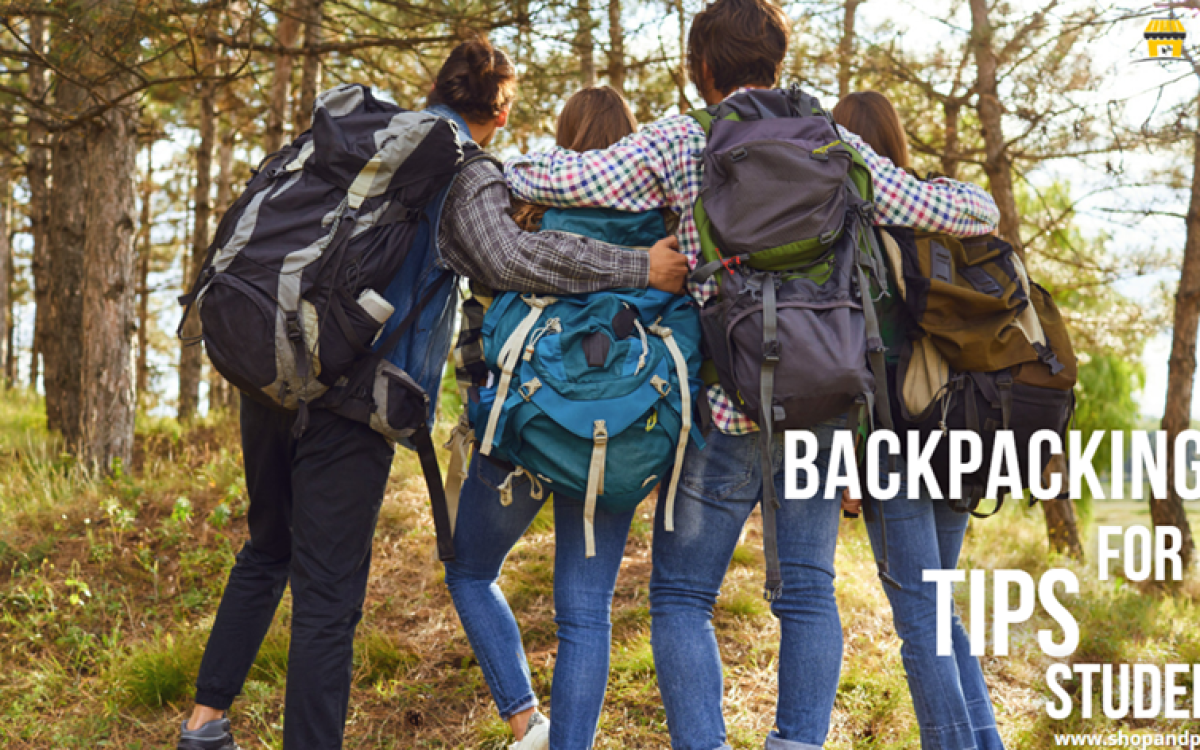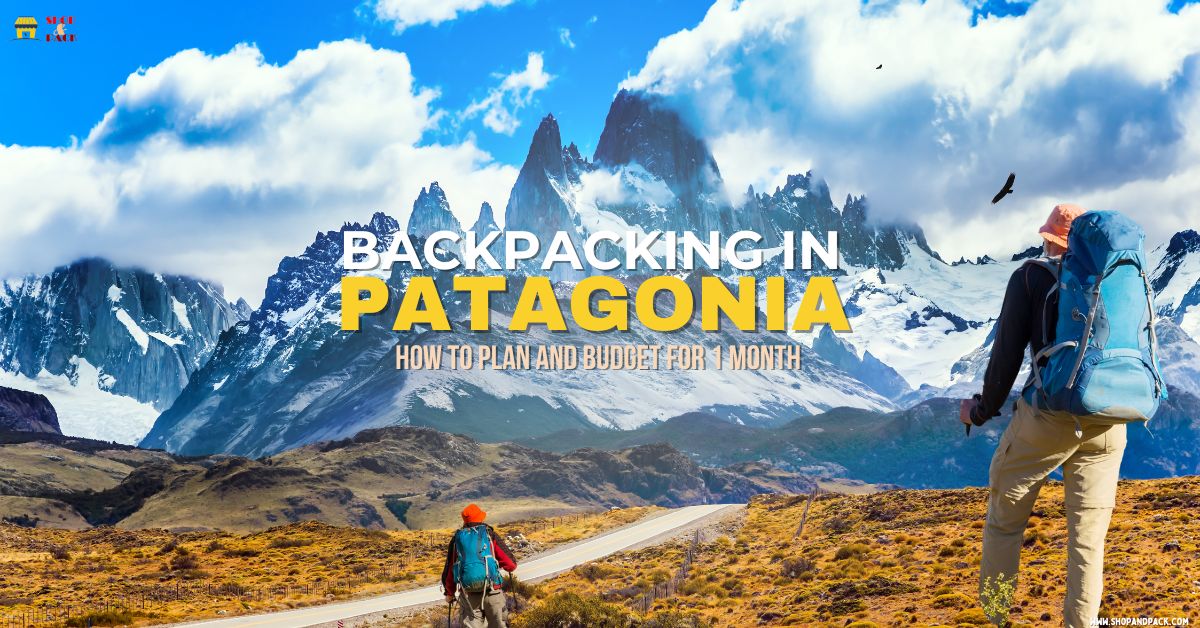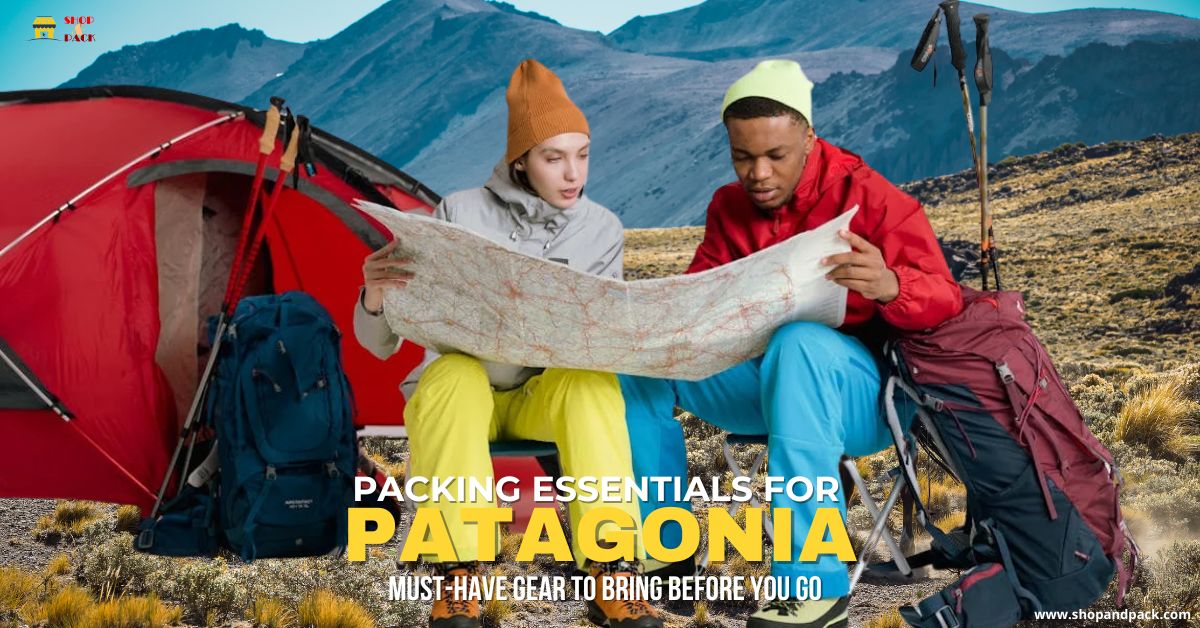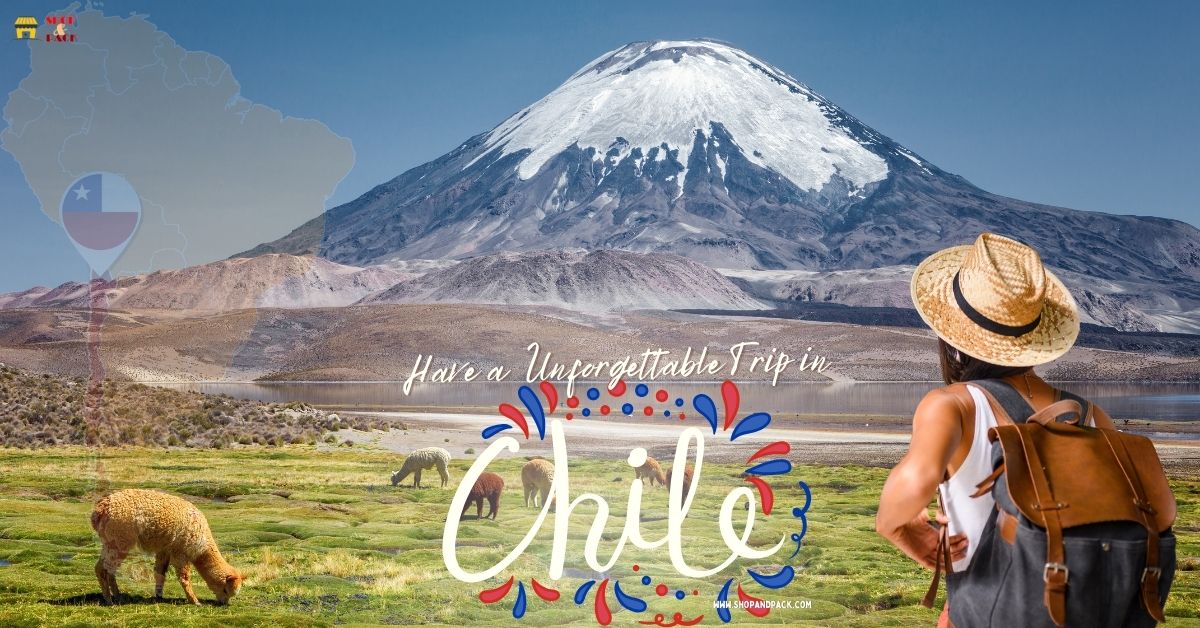Going on a backpacking adventure as a student can be one of the most thrilling experiences of your life. Picture this: you and your friends, armed with nothing but your backpacks, setting off to explore new places, meet new people, and create unforgettable memories. But before you lace up your hiking boots and hit the trails, it’s essential to be prepared. In this guide, we’ll cover everything you need to know about backpacking as a student, from planning your itinerary to staying safe on the road. So, grab your backpack, and let’s dive into the world of backpacking tips for students!
6 Backpacking Tips for Students for Unforgettable Memories
1. Choose Your Destination Wisely:
Selecting the perfect destination sets the tone for your entire backpacking adventure. Here’s how to make a well-informed choice:
a. Research Destinations:
- Start by brainstorming destinations that align with your budget and interests. Consider factors such as geographical diversity, cultural richness, and recreational opportunities.
- Utilize online resources, travel forums, and guidebooks to gather information about potential destinations. Websites like TripAdvisor, Lonely Planet, and Travel + Leisure offer valuable insights and user reviews.
- Seek recommendations from fellow travelers, friends, and family members who have explored similar destinations. Their firsthand experiences can provide invaluable guidance in your decision-making process.
b. Consider practical factors:
- Weather: Assess the climate of your chosen destination during your planned travel dates. Factor in seasonal variations, monsoon seasons, and extreme weather conditions that may impact your itinerary and packing choices.
- Visa Requirements: Research the visa regulations and entry requirements for each potential destination. Determine whether you’re eligible for visa-free entry, visa on arrival, or if you need to apply for a visa in advance. Keep in mind that visa processing times and fees vary depending on your nationality and destination.
- Safety: Prioritize destinations with favorable safety records and low crime rates. Consult travel advisories issued by reputable sources such as government agencies (e.g., U.S. Department of State, UK Foreign, Commonwealth & Development Office) and international organizations (e.g., World Health Organization, Centers for Disease Control and Prevention) to stay informed about potential risks and security concerns.
c. Opt for Off-Peak Seasons:
- Timing is key when it comes to planning your backpacking adventure. Consider traveling during off-peak seasons to avoid crowds, score better deals on accommodations, and immerse yourself in a more authentic travel experience.
- Off-peak seasons vary depending on the destination and may coincide with periods of lower tourist activity, milder weather, or cultural festivals. Research the peak tourist seasons for your chosen destinations and plan your trip accordingly.
- Be mindful of local holidays, school vacations, and major events that may impact travel availability and prices. Flexibility in your travel dates allows you to capitalize on cost-saving opportunities and enjoy a more relaxed atmosphere at popular attractions.
2. Set a Realistic Budget:
Creating a comprehensive budget is essential for managing your finances effectively during your backpacking adventure. Here’s how to break down and optimize your expenses:
a. Calculate Expenses:
- Transportation: Estimate the costs of flights, trains, buses, or other modes of transportation to reach your destination and move between locations during your trip. Consider utilizing budget airlines, rail passes, or ride-sharing services to minimize costs.
- Accommodation: Research accommodation options ranging from hostels and guesthouses to budget hotels and camping sites. Compare prices, amenities, and location proximity to attractions and transportation hubs. Allocate funds for accommodation expenses based on your preferred comfort level and travel style.
- Food: Budget for daily meals and snacks by researching local dining options, grocery stores, and street food vendors. Opt for budget-friendly eateries, markets, and self-catering options to reduce food expenses without compromising on taste or nutrition.
- Activities: Identify must-see attractions, excursions, and experiences you wish to include in your itinerary. Research admission fees, guided tours, and activity costs to gauge their impact on your overall budget. Prioritize free or low-cost activities, such as hiking, exploring museums, and attending cultural events, to maximize your travel experiences without overspending.
b. Look for student discounts.
- Take advantage of student discounts and perks available for transportation, accommodation, and attractions. Many museums, attractions, and tour operators offer discounted rates for students with valid student IDs or international student cards.
- Explore student travel programs, such as STA Travel and International Student Identity Card (ISIC), which provide exclusive discounts on flights, accommodations, and travel insurance for students.
- Check for student rates at hostels, universities, and cultural institutions to save money on accommodation and cultural experiences. Remember to carry your student ID or ISIC card to avail of discounts wherever applicable.
c. Leave Room for Unexpected Expenses:
- Budgeting for unexpected expenses and emergencies is crucial for maintaining financial resilience during your backpacking trip. Set aside a contingency fund to cover unforeseen costs such as medical emergencies, flight delays, or lost belongings.
- Aim to allocate at least 10–20% of your total budget for emergencies, depending on the length and complexity of your trip. Consider purchasing travel insurance to mitigate financial risks and provide coverage for medical expenses, trip cancellations, and emergency evacuations.
- Keep track of your expenses using budgeting apps, spreadsheets, or travel journals to monitor your spending habits and adjust your budget accordingly as you travel.
3. Pack light, pack right:
Mastering the art of packing light is essential for a seamless and enjoyable backpacking experience. Follow these tips to optimize your packing list and minimize unnecessary weight:
a. Stick to the essentials:
- Clothing Layers: Pack versatile clothing items that can be layered for warmth or removed for breathability. Choose lightweight, quick-drying fabrics that are suitable for various weather conditions. Opt for items that can be mixed and matched to create multiple outfits without overpacking.
- Sturdy Footwear: Invest in comfortable, durable footwear suitable for your planned activities and terrain. Choose lightweight hiking boots or trail shoes with good traction and ankle support. Consider packing sandals or flip-flops for casual wear and shower use.
- Toiletries: Prioritize essential toiletries such as toothpaste, toothbrush, shampoo, conditioner, soap, and sunscreen. Opt for travel-sized containers to minimize bulk and weight. Consider purchasing toiletries locally at your destination to save space in your backpack.
- First-Aid Kit: Pack a compact first-aid kit containing essentials such as bandages, antiseptic wipes, pain relievers, blister treatment, and any necessary medications. Customize your first-aid kit based on your medical needs and destination-specific risks.
- Travel Documents: Organize and protect your travel documents, including passports, visas, travel insurance, an itinerary, and emergency contacts. Consider making digital copies and storing them securely in cloud storage or email for easy access in case of loss or theft.
b. Invest in lightweight gear.
- Choose lightweight and compact gear to maximize space and weight efficiency in your backpack. Invest in quality travel gear, such as lightweight tents, sleeping bags, and camping stoves designed for backpacking.
- Opt for multipurpose items that serve multiple functions to reduce the number of individual items you need to pack. For example, a lightweight travel towel can double as a beach towel, picnic blanket, or yoga mat.
- Consider the weight-to-utility ratio when selecting gear and equipment. Prioritize items that offer the most functionality while minimizing bulk and weight.
c. Share items with Travel Buddies:
- Collaborate with your travel companions to share common items and minimize individual loads. Coordinate packing lists to avoid duplicating items and maximize space efficiency.
- Share bulky or heavy items such as sunscreen, insect repellent, shampoo, and cooking utensils among your group. Divide responsibilities for carrying shared items based on each person’s backpack capacity and strength.
- Communication is key to ensuring everyone is on the same page regarding shared items and packing arrangements. Discuss preferences, priorities, and space-saving strategies before departure to streamline the packing process.
4. Plan Your Itinerary Together:
Creating a well-crafted itinerary is essential for maximizing enjoyment and ensuring a smooth travel experience. Follow these steps to plan a memorable backpacking adventure with your friends:
a. Collaborate on a Flexible Travel Plan:
- Gather input from each member of your travel group to identify their interests, preferences, and priorities for the trip. Consider everyone’s budget constraints, time availability, and preferred activities to create a well-rounded itinerary.
- Hold a group meeting or brainstorming session to discuss potential destinations, activities, and accommodations. Encourage open communication and compromise to reach a consensus on the overall travel plan.
- Design a flexible itinerary that allows for spontaneity and individual exploration while accommodating group activities and shared experiences. Strike a balance between structured activities and free time to accommodate diverse interests and energy levels.
b. Research Must-See Attractions and Hidden Gems:
- Conduct thorough research to identify must-see attractions, iconic landmarks, and cultural highlights at each destination on your itinerary. Utilize travel guides, online resources, and recommendations from fellow travelers to compile a comprehensive list of must-visit places.
- Explore off-the-beaten-path destinations, local events, and hidden gems that offer authentic cultural experiences and unique insights into the destination. Engage with locals, attend festivals, and seek out lesser-known attractions to uncover hidden treasures and create lasting memories.
- Prioritize activities and attractions based on your group’s interests, time constraints, and budget considerations. Be open to exploring diverse experiences, from outdoor adventures and historical sites to culinary delights and cultural immersion.
c. Leave Room for Spontaneity and Unexpected Adventures:
- Embrace the spontaneity of travel by leaving ample room in your itinerary for unplanned adventures and serendipitous discoveries. Allow time for strolls, impromptu detours, and spontaneous encounters with the locals.
- Remain flexible and adaptable to changing circumstances, such as inclement weather, transportation delays, or unexpected opportunities. Approach challenges and setbacks with a positive attitude and a sense of adventure, knowing that they are an integral part of the travel experience.
- Encourage group members to share their ideas, suggestions, and spontaneous impulses throughout the journey. Embrace the freedom to deviate from the planned itinerary and pursue new experiences that arise along the way.
5. Stay safe and informed.
Prioritizing safety and staying informed are paramount to ensuring a secure and enjoyable backpacking experience. Follow these guidelines to protect yourself and your travel companions throughout your journey:
a. Keep copies of vital documents:
- Create digital and physical copies of essential documents such as passports, travel insurance policies, medical prescriptions, and emergency contact information. Store digital copies securely in cloud storage or email for easy access in case of loss or theft.
- Carry laminated copies or encrypted USB drives containing scanned copies of your documents in a separate location from the originals. Ensure that each member of your travel group has access to these backup copies in case of emergencies.
- Memorize or store important contact numbers, including embassy or consulate contacts, local emergency services, and travel insurance providers. Keep a written list of emergency contacts in your backpack or wallet for quick reference.
b. Stay abreast of travel advisories:
- Monitor travel advisories and alerts issued by reputable sources, such as government agencies, embassies, and international organizations. Stay informed about potential risks, security threats, natural disasters, and health concerns that may affect your travel plans.
- Register with your country’s embassy or consulate in the destination country to receive updates and assistance in case of emergencies. Provide them with your itinerary and contact information to facilitate communication during crises.
- Research local customs, cultural norms, and legal regulations in each destination to avoid inadvertently violating laws or causing offense. Respect cultural sensitivities regarding attire, behavior, and interactions with locals to foster positive relationships and minimize misunderstandings.
c. Trust your instincts and maintain situational awareness.
- Listen to your intuition and trust your instincts when assessing unfamiliar situations or encountering potential risks. If something feels off or unsafe, remove yourself from the situation and seek assistance from trusted sources.
- Stay vigilant and maintain situational awareness of your surroundings, especially in crowded or high-risk areas such as public transportation hubs, tourist attractions, and nightlife districts. Keep valuables secure and avoid displaying signs of wealth or vulnerability.
- Avoid risky behaviors such as excessive drinking, drug use, or engaging with strangers in isolated or unfamiliar settings. Travel in groups whenever possible, and communicate openly with your companions about safety concerns and contingency plans.
6. Embrace the backpacking mindset.
Adopting the right mindset is key to maximizing the rewards of your backpacking adventure. Here’s how to cultivate a mindset that fosters growth, resilience, and connection:
a. Cultivate an Open-Minded, Adaptable Approach:
- Embrace the unknown with curiosity and enthusiasm, welcoming new experiences and cultural encounters with an open mind. Embrace diversity and celebrate differences, recognizing the richness that comes from encountering unfamiliar perspectives and ways of life.
- Practice flexibility and adaptability when faced with unexpected challenges or changes to your itinerary. Embrace the opportunity to problem-solve creatively and navigate unfamiliar situations with resilience and resourcefulness.
- Embrace spontaneity and serendipity, allowing room for unplanned adventures and chance encounters to enrich your journey. Be open to veering off the beaten path and embracing detours that lead to unexpected discoveries and memorable experiences.
b. View Challenges and Setbacks as Integral Parts of the Adventure:
- Shift your perspective to see challenges and setbacks as valuable learning opportunities and growth experiences rather than obstacles to be overcome. Embrace the inherent unpredictability of travel and the resilience that comes from navigating adversity.
- Embrace the concept of “embracing the suck,” acknowledging that discomfort, inconvenience, and setbacks are natural and inevitable aspects of the backpacking experience. Embrace the discomfort as part of the journey, knowing that it often leads to personal growth and transformation.
- Foster a positive mindset by reframing setbacks as temporary setbacks rather than insurmountable barriers. Approach challenges with creativity, perseverance, and a sense of humor, knowing that each obstacle you overcome strengthens your resilience and fortitude.
c. Foster Connections with Fellow Travelers, Locals, and the Natural Environment:
- Prioritize human connections by seeking opportunities to engage with fellow travelers, locals, and communities along your journey. Strike up conversations with strangers, participate in group activities, and join communal meals to foster meaningful connections and forge lasting friendships.
- Embrace cultural immersion by engaging with local customs, traditions, and lifestyles. Participate in cultural festivals, attend local events, and learn basic phrases in the local language to facilitate communication and connection.
- Deepen your connection with the natural world by immersing yourself in the beauty and tranquility of natural landscapes. Take time to appreciate the awe-inspiring scenery, observe local wildlife, and engage in outdoor activities that foster a sense of connection with the environment.
Choose and Plan your destination wisely
You can unlock the full potential of your backpacking journey and create memories that last a lifetime with your friends.
- By cultivating an open-minded, adaptable approach to new experiences.
- Viewing challenges and setbacks as integral parts of the adventure.
- Fostering connections with fellow travelers, locals, and the natural environment.
The backpacking trip as a student can be both exhilarating and rewarding. By following these backpacking tips for students, you can plan a memorable adventure with your friends while staying safe and savvy on the road. Remember to choose your destination wisely, set a realistic budget, pack light, plan your itinerary together, stay safe and informed, and embrace the backpacking mindset. So, grab your backpack, gather your friends, and get ready for the journey of a lifetime!
This article provides practical advice for students planning a backpacking trip with friends, covering essential aspects such as destination selection, budgeting, packing, itinerary planning, safety, and mindset. The information is presented straightforwardly and engagingly, ensuring easy comprehension for readers of all levels.
For more travel tips and inspiration, visit National Geographic’s Backpacking Guide and Lonely Planet’s Student Travel Guide.






